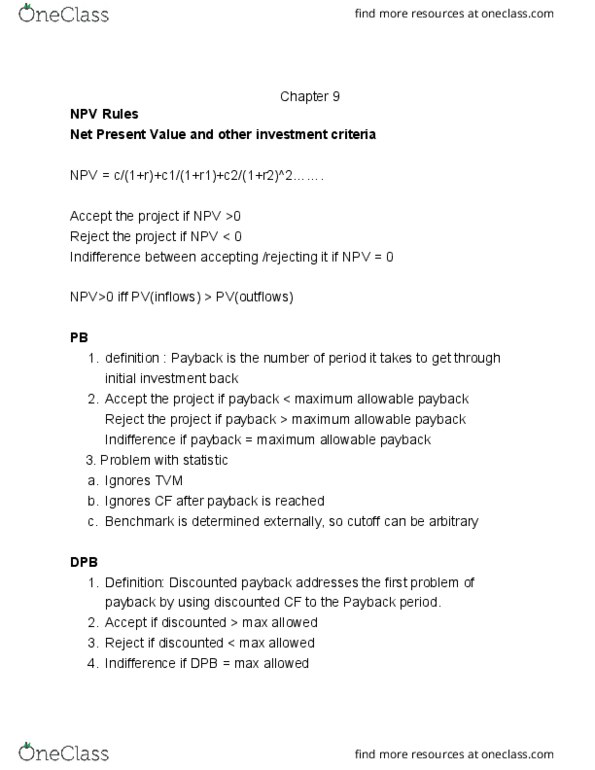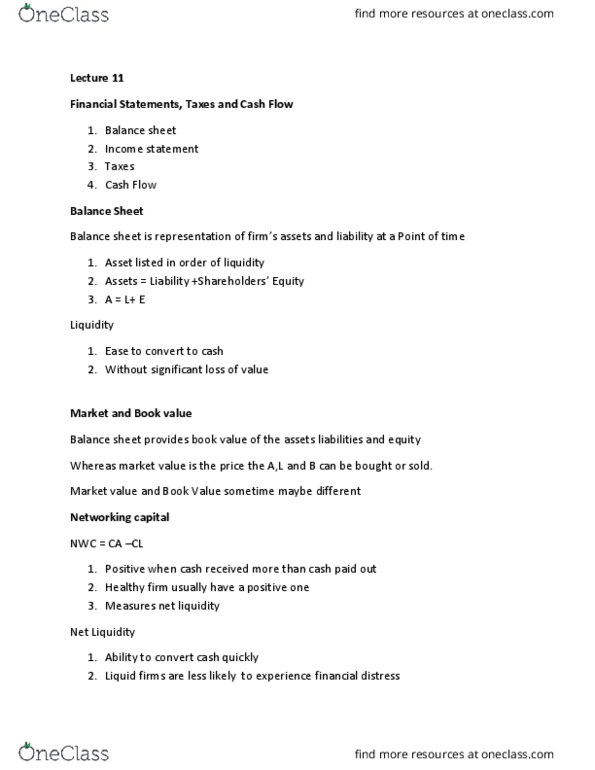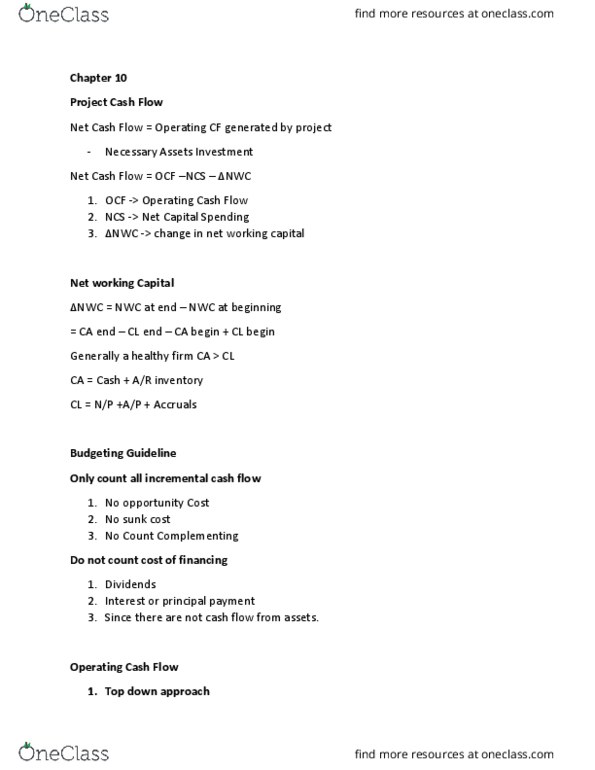FIN 302 Lecture 11: Lec 11
Document Summary
Get access


Related Documents
Related Questions
| P5-3 Preparing a Balance Sheet and Analyzing Some of Its Parts LO5-3 | |||||||
| Exquisite Jewelers is developing its annual financial statements for 2015. The following amounts were correct at December 31, 2015: | |||||||
| cash, $58,000; accounts receivable, $71,000; merchandise inventory, $154,000; prepaid insurance, $1,500; | |||||||
| investment in stock of Z corporation (long-term), $36,000; store equipment, $67,000; used store equipment held for disposal, $9,000; | |||||||
| accumulated depreciation, store equipment, $19,000; accounts payable, $52,500; long-term note payable, $42,000; income taxes payable, $9,000; | |||||||
| retained earnings, $164,000; and common stock, 100,000 shares outstanding, par value $1.00 per share (originally sold and issued at $1.10 per share). | |||||||
| Required: | |||||||
| 1 | Based on these data, prepare a December 31, 2015, balance sheet. (Amounts to be deducted should be indicated by a minus sign.) | ||||||
| Possible input areas are shaded. | |||||||
| EXQUISITE JEWELERS | |||||||
| Balance Sheet | |||||||
| December 31, 2015 | |||||||
| Assets | |||||||
| Current assets: | |||||||
| Total current assets | $ - | ||||||
| Long-term investments: | |||||||
| Fixed assets: | |||||||
| Total fixed assets | - | ||||||
| Other assets: | |||||||
| Total assets | $ 377,500 | ||||||
| Liabilities | |||||||
| Current liabilities: | |||||||
| Total current liabilities | $ - | ||||||
| Long-term liabilities: | |||||||
| Total liabilities | - | ||||||
| Stockholders' Equity | |||||||
| Contributed capital: | |||||||
| Total contributed capital | - | ||||||
| Total stockholders' equity | - | ||||||
| Total liabilities and stockholders' equity | $ - | ||||||
| Required: | |||||||
| 2 | What is the net book value of the store equipment? | ||||||
| Net book value | |||||||
2. Balance sheet
The balance sheet provides a snapshot of the financial conditionof a company. Investors and analysts use the information given onthe balance sheet and other financial statements to make severalinterpretations regarding the companyâs financial condition andperformance.
Blue Hamster Manufacturing Inc. is a hypothetical company.Suppose it has the following balance sheet items reported at theend of its first year of operation. For the second year, some partsare still incomplete. Use the information given to complete thebalance sheets for Blue Hamster Manufacturing Inc. for the yearsending December 31, Year 2 and 1, respectively.
Blue Hamster Manufacturing Inc. | |||||
|---|---|---|---|---|---|
Balance Sheet | |||||
For the Year ended December 31 | |||||
| Year 2 | Year 1 | Year 2 | Year 1 | ||
| Assets | Liabilities and equity | ||||
| Current assets: | Current liabilities: | ||||
| Cash and equivalents | $55,350 | Accounts payable | $0 | $0 | |
| Accounts receivable | $25,312 | $20,250 | Accruals | $3,516 | $0 |
| Inventories | $74,250 | $59,400 | Notes payable | $19,921 | $18,750 |
| Total current assets | $168,750 | $135,000 | Total current liabilities | $18,750 | |
| Net fixed assets: | Long-term debt | $70,312 | $56,250 | ||
| Net plant and equipment | $165,000 | Total debt | $93,750 | $75,000 | |
| Common equity: | |||||
| Common stock | $182,812 | $146,250 | |||
| Retained earnings | $78,750 | ||||
| Total common equity | $281,250 | $225,000 | |||
| Total assets | $375,000 | $300,000 | Total liabilities and equity | $375,000 | $300,000 |
Given the information in the preceding balance sheetâandassuming that Blue Hamster Manufacturing Inc. has 50 million sharesof common stock outstandingâread each of the following statements,then identify the selection that best interprets the informationconveyed by the balance sheet.
Statement #1: Blue Hamsterâs pool of relatively liquid assets,which are available to support the companyâs current and futuresales, decreased from Year 1 to Year 2.
This statement is , because:
Blue Hamsterâs total current liabilities balance decreased by$33,750 between Year 1 and Year 2.
Blue Hamsterâs total current liabilities balance increased from$20,250 to $25,312 between Year 1 and Year 2.
Blue Hamsterâs total current asset balance actually increasedfrom $135,000 to $168,750 between Year 1 and Year 2.
Blue Hamsterâs total current asset balance decreased from$168,750 to $135,000 between Year 1 and Year 2.
Statement #2: In Year 2, Blue Hamster Manufacturing Inc. wasprofitable.
This statement is , because:
Blue Hamsterâs retained earnings account increased between theend of Years 1 and 2.
The cash and equivalents account increased between Years 1 and2.
Blue Hamsterâs total assets increased between Years 1 and 2.
Statement #3: The book value per share of Blue Hamsterâs stockin Year 2 was $5,625.
This statement is , because:
The per-share book value is calculated by dividing the companyâstotal assets by the number of outstanding shares of commonstock.
The per-share book value is calculated by dividing the companyâstotal debt by the number of outstanding shares of common stock.
The per-share book value is calculated by dividing the companyâstotal common equity by the number of outstanding shares of commonstock.
Based on your understanding of the different items reported onthe balance sheet and the information they provide, if everythingelse remains the same, then the cash and equivalents item on thecurrent balance sheet is likely to if the firm issues$3 million of new common stock.
Based on your understanding of the different items reported inthe balance sheet and the information they provide, which statementregarding Blue Hamster Manufacturing Inc.âs balance sheet isconsistent with U.S. Generally Accepted Accounting Principles(GAAP)?
The companyâs assets should be listed in alphabetical order.
The companyâs assets should be listed in the order in which theyare to be converted into cash.
The companyâs assets should be listed from those carrying thelargest balance to those with the smallest balance.





